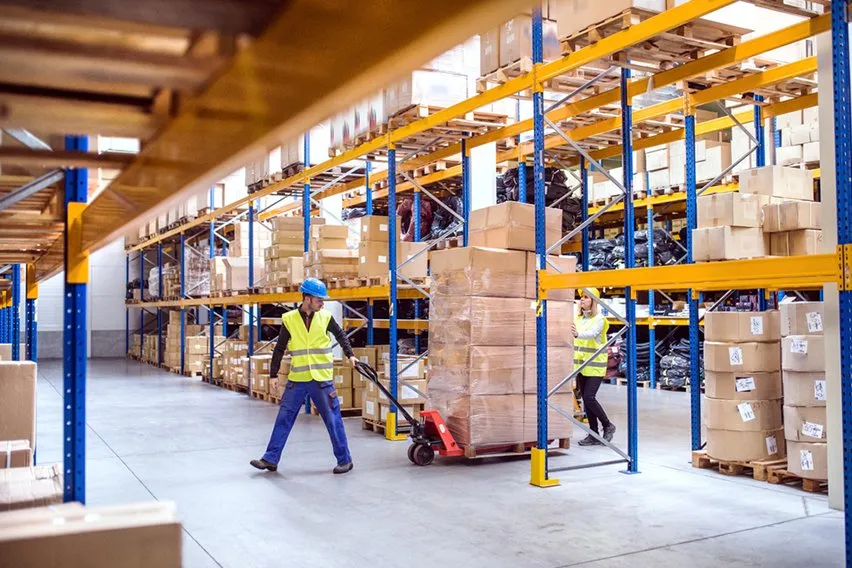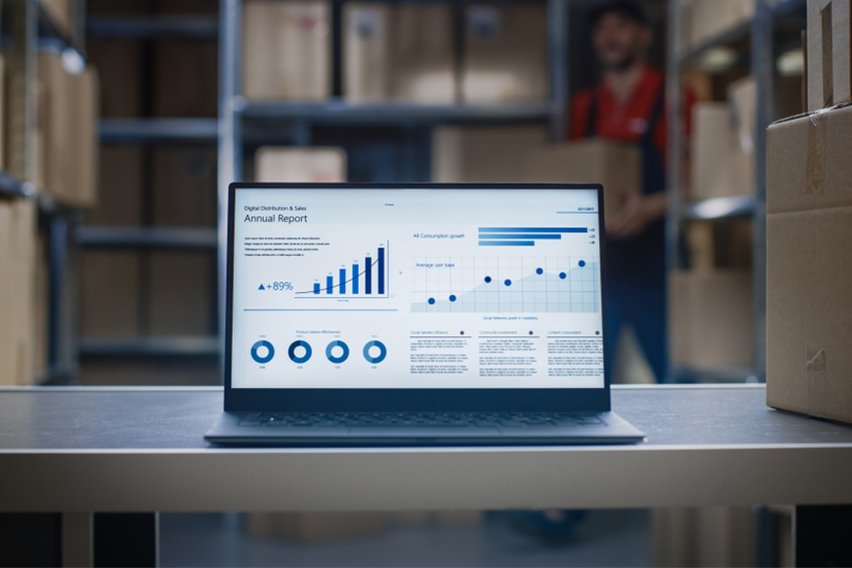What Is a Warehouse? Definition & Important Elements

There are some different types of warehouses that can get used depending on the needs of your business. Some warehouse management requires cold storage and others are fully automated. A warehouse can also simply get used to store purchases before they get shipped to a fulfillment center.
A warehouse is meant to hold different products or goods before they are sent to another location. Sometimes this is based on purchases getting made by customers and orders needing to get filled. Or, a warehouse could be home to an assembly line where employees put pieces of a product together.
Here is everything you need to know about warehouses and any important elements.
Here’s What We’ll Cover:
What Elements Are Included in a Warehouse?
What Is a Warehouse?
A warehouse is a place where products or materials can get stored before they move to another location. It’s a crucial element to your supply chain management. And some types of warehouses get used and designed for different reasons.
A warehouse can help with inventory tracking, shipping costs and meeting customer demands. Having your warehouse set up properly makes the flow of materials more efficient.

Different Types of Warehouses
There are different types of warehouse design out there depending on the needs of your business. Certain warehouses require special HVAC systems or specialized equipment. Here are a few different types of warehouses.
- General Warehouse: a basic storage facility for items that don’t need climate control or a specialized environment
- Distribution Center: a warehouse where a large number of products or raw materials are then sent to retailers or wholesalers
- Fulfillment Warehouse: a type of warehouse where online purchases will get picked, packed and shipped
- Automated Warehouse: fully-automated robotic systems can execute all the processes
- Climate-Controlled: if some items or products need to get refrigerated or kept at a certain temperature
Different warehouses are going to provide a varying range of functionality.
What Elements Are Included in a Warehouse?
There are a lot of moving parts that go into the organization of a warehouse. You need to know exactly what type of products will get stored and the most efficient place to store them. The flow of the materials and the space that’s available to store them are important factors to consider.
You also need to take into account the number and size of the racks or storage equipment that is needed. The space that gets assigned for each area needs to be suitable for the product that will get stored. When this happens, you can have improved inventory accuracy.
Having an efficient warehouse will also contribute to a reduction in overhead costs. When you improve how the warehouse operates you can make better staffing decisions. You are also able to lower the level of risk of damaged or misplaced products.
There are a few main elements of a warehouse that can get used to help with the different areas of your business. They can include:
- Storage systems for quick access and efficient processing
- Inventory management software to track the inventory coming into the warehouse and going out
- Staff to make sure the processes are getting completed efficiently
- Climate control for any products that need to stay at a certain temperature
- Equipment to move products to and from your warehouse

Key Takeaways
Different types of businesses will require different types of warehouse processes. If you run a distribution center that only deals with footwear, then you won’t need a climate-controlled warehouse. And if you operate a fulfillment center, then an assembly line setup probably wouldn’t work well for your needs.
Essentially, a warehouse is a place to store products before or after they get sent to a separate location. For example, a distribution center might hold inventory for a fulfillment center. If customer demand increases and the inventory is low, they can place an order with the distribution center.
Are you looking into building a new warehouse to expand your business or keep up with customer demand? Take a look into your business operations and identify the main areas that could get improved with a warehouse. This will allow you to gather the right information to decide which type of warehouse will work best for your needs.
It’s also important to keep in mind the different elements that go into a warehouse. They will vary depending on the type of warehouse you have, but they serve the same purpose regardless. They get put in place to help supply chain operations and streamline employee workflow.
Did you enjoy reading this guide? Head over to our resource hub for more content!
RELATED ARTICLES

 3 Better Alternatives to SWOT Analysis for Business Planning
3 Better Alternatives to SWOT Analysis for Business Planning What Is Multi-Channel Retailing and How to Build It?
What Is Multi-Channel Retailing and How to Build It? Definitions of Supply Chain Management and Guide
Definitions of Supply Chain Management and Guide The Differences Between Takt Time vs Cycle Time vs Lead Time
The Differences Between Takt Time vs Cycle Time vs Lead Time How to Perform Inventory Analysis: Methods, Tips & KPIs
How to Perform Inventory Analysis: Methods, Tips & KPIs What Is AVS Check (Address Verification Service)?
What Is AVS Check (Address Verification Service)?